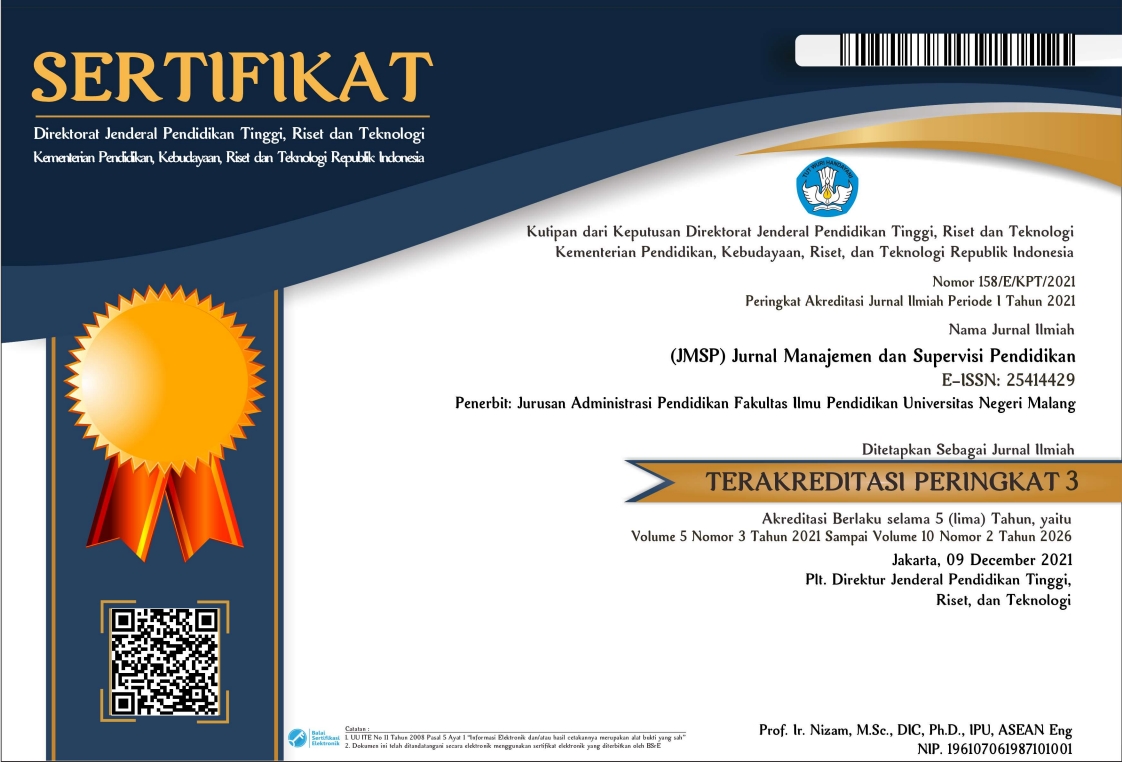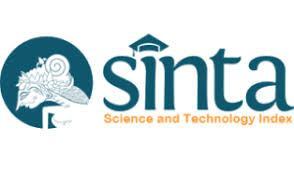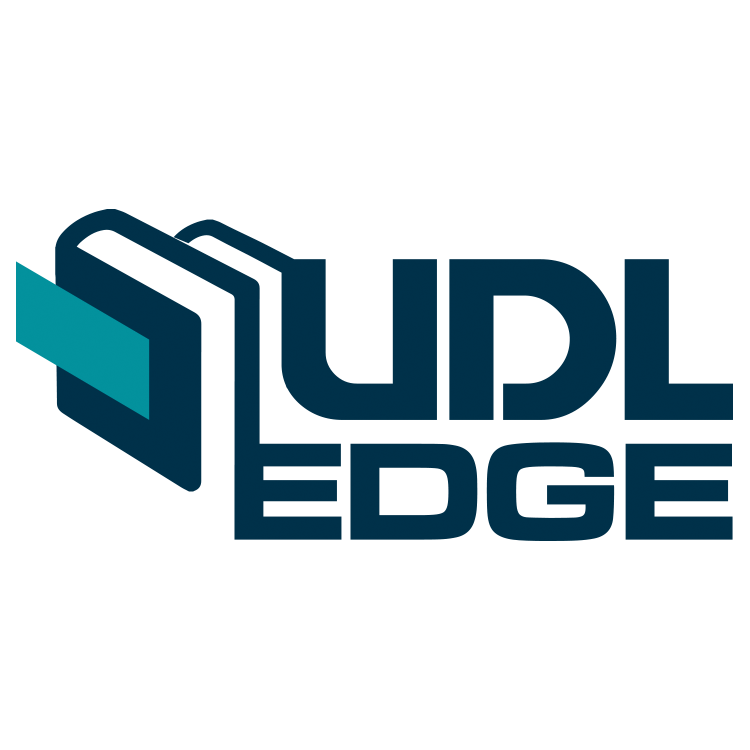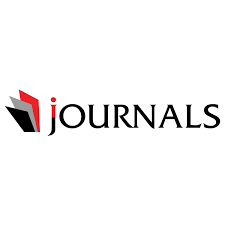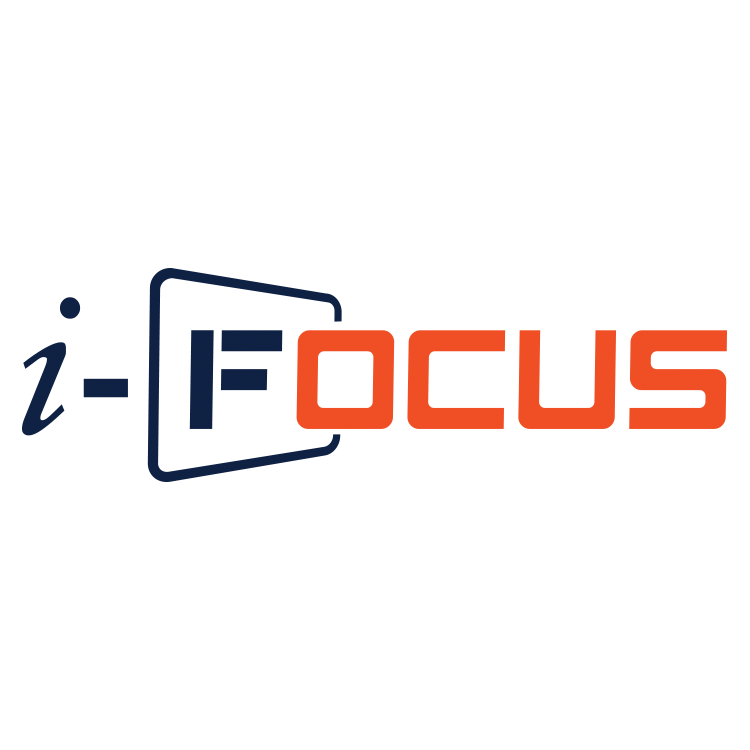PERAN KEPEMIMPINAN VISIONER KEPALA SEKOLAH HUBUNGANNYA DENGAN KESIAPAN GURU MENYONGSONG REVOLUSI INDUSTRI 4.0
Abstract
Abstract: The purpose of this research is to find out, (1) the level of visionary role of the principal’s visionary leadership, namely the reconstruction of policies, direction determinants, change agents, spokespersons, and trainers as well as the teacher’s readiness variable to meet the industrial revolution 4.0, (2) the relationship between the role of the principal’s leadership in reconstructing the policy towards teacher readiness, (3) the relationship between the variables determining the direction of the teacher’s readiness, (4) the relationship of the agent of change variables to the teacher’s readiness, (5) the relationship of the speaker variable to the teacher’s readiness, (6) the relationship of the coach’s variable to the teacher’s readiness, ( 7) the relationship between the principal’s leadership role in reconstructing policies, directors, change agents, spokespersons, and trainers simultaneously with teacher readiness. This study uses a quantitative approach in the effective SDN Malang. Data collection techniques with a closed questionnaire, using central tendency analysis and path analysis.
Keywords: visionary leadership, teacher readiness, industrial revolution 4.0
Abstrak: Tujuan penelitian untuk mengetahui, (1) tingkat variabel peran kepemimpinan visioner kepala sekolah yakni perekonstruksi kebijakan, penentu arah, agen perubahan, juru bicara, dan pelatih serta variabel kesiapan guru menyongsong revolusi industri 4.0, (2) hubungan peran kepemimpinan kepala sekolah dalam merekonstruksi kebijakan terhadap kesiapan guru, (3) hubungan variabel penentu arah terhadap kesiapan guru, (4) hubungan variabel agen perubahan terhadap kesiapan guru, (5) hubungan variabel juru bicara terhadap kesiapan guru, (6) hubungan variabel pelatih terhadap kesiapan guru, (7) hubungan antara peran kepemimpinan kepala sekolah dalam merekonstruksi kebijakan, penentu arah, agen perubahan, juru bicara, dan pelatih secara simultan dengan kesiapan guru. Penelitian ini menggunakan pendekatan kuantitatif di SDN efektif Kota Malang. Teknik pengumpulan data dengan angket tertutup, menggunakan analisis tendensi sentral dan analisis path.
Kata Kunci: kepemimpinan visioner, kesiapan guru, revolusi industri 4.0
Keywords
Full Text:
PDFReferences
K. B. Boal and R. Hooijberg, “Strategic Leadership Research: Moving on,” Leadersh. Q., vol. 11, no. 4, pp. 515–549, 2000.
M. Parco-Tropicales and A. B. de Guzman, “A Structural Equation Model (SEM) of the Impact of Transformational, Visionary, Charismatic and Ethical Leadership Styles on the Development of Wise Leadership among Filipino Private Secondary School Principals,” Asia Pacific Educ. Rev., vol. 15, no. 4, pp. 547–559, 2014.
W. Setiawan, “Peran Kepemimpinan Visioner Untuk Menghasilkan Calon Pendidik Yang Berkarakter Kuat dan Cerdas Di Fakultas Keguruan Dan Ilmu Pendidikan (Fkip) Uns Surakarta,” UNS, 2009.
G. J. Tellis, “Disruptive technology or visionary leadership?,” J. Prod. Innov. Manag., vol. 23, no. 1, pp. 34–38, 2006.
T. Wallner and G. Wagner, “Academic Education 4.0,” Int. Conf. Educ. New Dev., vol. June, pp. 155–159, 2016.
D. A. Stam, D. van Knippenberg, and B. Wisse, “The Role of Regulatory Fit in Visionary Leadership,” J. Organ. Behav., vol. 31, no. 4, pp. 499–518, 2010.
M. Haigh, F. Ell, and V. Mackisack, “Judging Teacher Candidates’ Readiness to Teach,” Teach. Teach. Educ., vol. 34, no. August, pp. 1–11, 2013.
T. Wanyama, “Using Industry 4.0 Technologies to Support Teaching and Learning,” Int. J. Eng. Educ., vol. 33, no. 2, pp. 693–702, 2017.
M. T. Greenberg, “School-Based Prevention: Current Status and Future Challenges,” Eff. Educ., vol. 2, no. 1, pp. 27–52, 2010.
“Pengembangan Iptek dan Pendidikan Tinggi di Era Revolusi Industri 4.0 – Kemenristek / BRIN.” [Online].
Available:https://www.ristekdikti.go.id/siaran-pers/pengembangan-iptek-dan-pendidikan-tinggi-di-era-
revolusi-industri-4-0/. [Accessed: 28-Oct-2019].
C. M. Taylor, C. J. Cornelius, and K. Colvin, “Visionary Leadership and its Relationship to Organizational Effectiveness,” Leadersh. Organ. Dev. J., vol. 35, no. 6, pp. 566–583, 2014.
Sunnyvale School District, “7 Correlates of Effective Schools,” 2009. [Online]. Available: https://www.sesd. org/Page/1001.
J. C. Creswell, Research Design: Pendekatan Metode Kualitatif, Kuantitatif, dan Campuran. Yogyakarta: Pustaka, 2018.
(JMSP) Jurnal Manajemen dan Supervisi Pendidikan, Vol 4 No 2 Maret 2020 : 101-112
M. Saunders, P. Lewis, and A. Thornhill, Research Methods for Business Students (7th Ed.), 7th ed. London: Pearson Education Limited, 2016.
B. B. Wiyono, Metodologi Penelitian (Pendekatan Kuantitatif, Kualitatif, dan Action Research). Malang: FIP Universitas Negeri Malang, 2007.
D. . Mertens, “Research and Evaluation in Education and Psychology Integrating Diversity With Quantitative, Qualitative, and Mixed Methods (3rd ed.).” Sage, California, 2009.
Y. In’Nami and R. I. E. Koizumi, Structural Equation Modeling In Educational Research : a Primer.
Rotterdam: Sense Publishers, 2013.
J. . Hair, W. . Black, B. . Babin, and R. . Anderson, Multivariate Data Analysis (7th Ed.). New Jersey: Pearson Prentice Hall, 2009.
S. Al-husseini and I. Elbeltagi, “Evaluating the effect of transformational leadership on knowledge sharing using structural equation modelling : the case of Iraqi higher education,” Int. J. Leadersh. Educ., vol. 21, no. 4, pp. 506–517, 2018.
B. Uslu and H. Arslan, “Faculty ’ s academic intellectual leadership : the intermediary relations with universities ’ organizational components,” Int. J. Leadersh. Educ., vol. 3124, no. April, pp. 1–13, 2017.
C. Fornell and D. . Larcker, “Evaluating Structural Equation Models with Unobservable Variables and Measurement Error,” J. Mark. Res., vol. 18, no. 1, pp. 39–50, 1981.
A. Harris, “Teacher Leadership,” in International Encyclopedia of the Social & Behavioral Sciences: Second
Edition, 2015, pp. 60–63.
W. A. Giles and B. Nanus, “Visionary Leadership: Creating a Compelling Sense of Direction for Your Organization,” Public Adm. Rev., vol. 54, no. 1, p. 87, 1994.
B. Nanus, Visionary Leadership: Creating A Compelling Sense Of Direction For Your Organization. San
Francisco, Ca: Jossey-Bass A Wiley Imprint, 1992.
Ramli Muhammad, “Kepemimpinan Inovatif Dalam Implementasi Kebijakan Strategis Pemerintah,” JPP (Jurnal Polit. Profetik), vol. 5, no. 2, pp. 168–184, 2017.
Y. Kondakci, K. Beycioglu, M. Sincar, and C. T. Ugurlu, “Readiness of Teachers for Change in Schools,” Int. J. Leadersh. Educ., vol. 20, no. 2, pp. 176–197, 2017.
Hadiwawan, “Kepemimpinan Visioner,” 2014. [Online]. Available: http://hadiwawan.com. [Accessed: 31-Jan-2015].
N. Azni, A. Aziz, and F. S. Fooi, “Literature Review on the Relationship Between Principal Instructional Leadership and Teacher Readiness To Implement Change,” J. Arts, Sci. Commer., vol. 6, no. January, pp. 12–19, 2015.
W. Abbas and I. Asghar, “The Role of Leadership in Organisational Change,” University of Gavle, 2010.
S. Kahan, “Leadership: Visionary Leadership,” Seth Kahan’s Visionary Leadership, 2008. [Online]. Available:
https://visionaryleadership.com/leadership-visionary-leadership/. [Accessed: 29-Oct-2019].
S. Thompson, “Visionary Leadership in Action while there is More to Leadership than Vision,” 2009. [Online]. Available: http//:www.books.google.co.th/ books?isbn=0761971777.
S. Kapu, “Principles of Visonary Leadership,” 2008. [Online]. Available: www.surinder.com. [Accessed: 17-Feb-2016].
S. Tepsaeng, “Visionary Leadership: New Model of School Administrators in Next Decade,” J. Educ. Adm. Srinagarinwirote Univ., vol. 6, no. 11, pp. 83–95, 2009.
A. C. Wright, “A Literature Review on the Determinants of Teacher Performance,” Econ, vol. 250, no. 1, pp. 1–18, 2012.
M. Fullan and N. Watson, “School-Based Management: Reconceptualizing to Improve Learning Outcomes,” Sch. Eff. Sch. Improv., 2000.
M. Fullan, “The Principal: Three Keys to Maximizing Impact,” J. Cathol. Educ., vol. 18, no. 1, pp. 208–211,
D. Hopkins and D. Jackson, Building the capacity for leading and learning. InHarris, A., Day, C., Hadfield, M., Hopkins, D., Hargreaves, A. And Chapman, C. Effective Leadership for School Improvement. New York: Routledge Falmer, 2003.
DOI: http://dx.doi.org/10.17977/um025v4i22020p101
Refbacks
- There are currently no refbacks.
Copyright (c) 2020 JMSP (Jurnal Manajemen dan Supervisi Pendidikan)

This work is licensed under a Creative Commons Attribution 4.0 International License.

